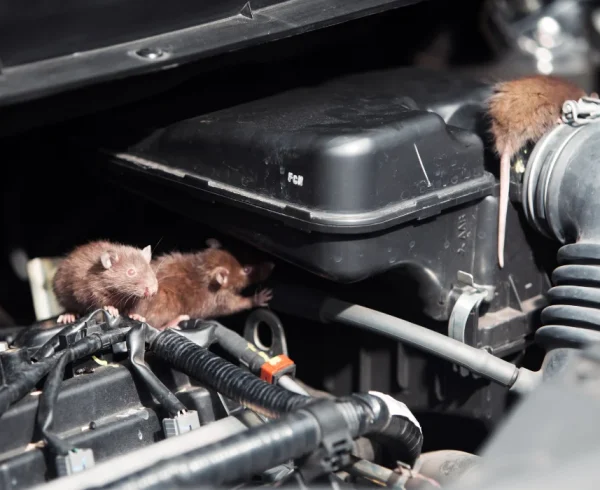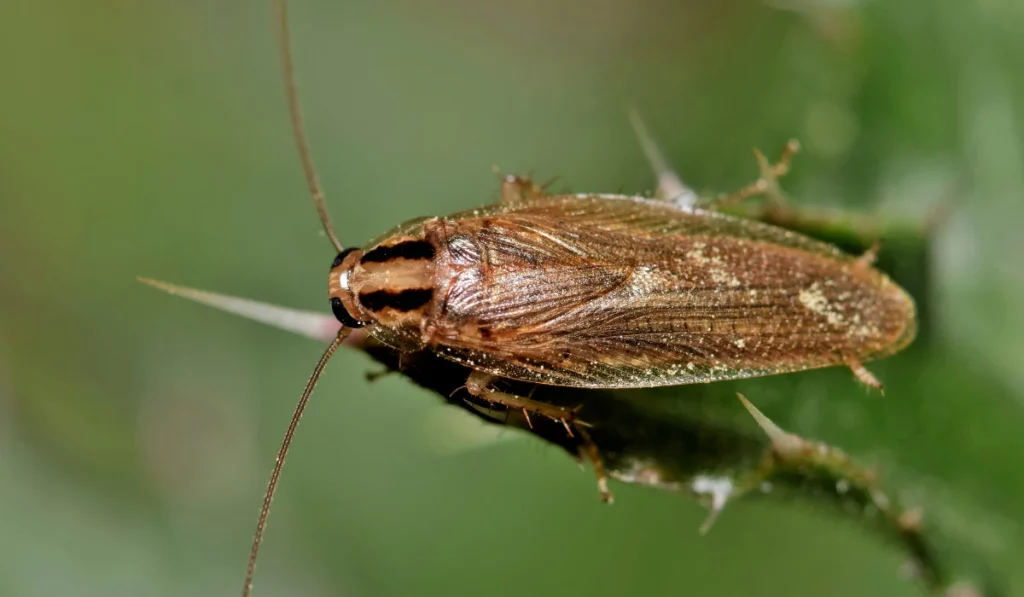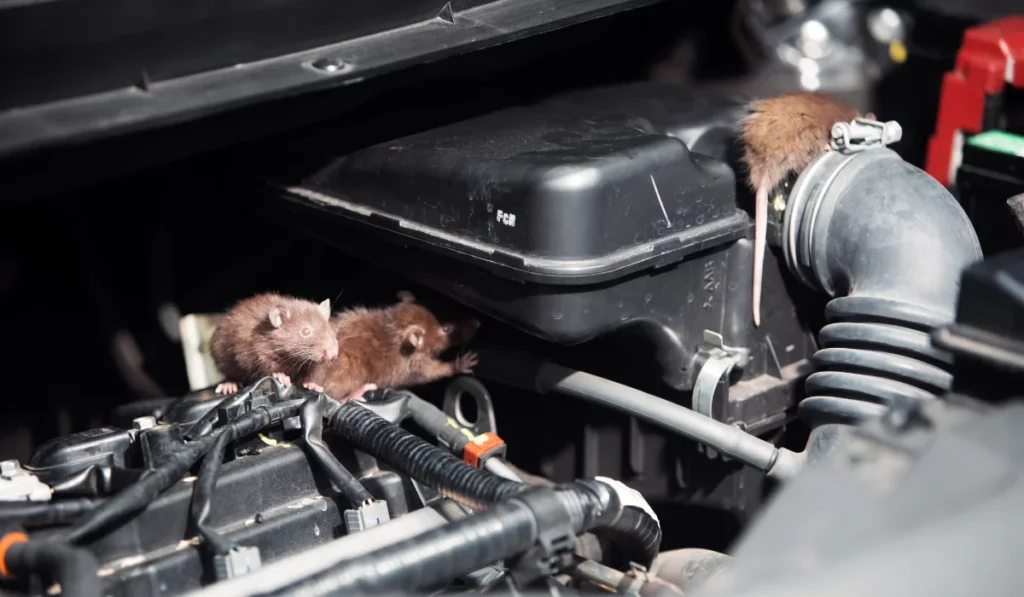
Rats nesting in your car’s engine bay can cause significant damage and pose health risks. From chewing through electrical wiring to leaving droppings and nesting materials, these critters can turn your vehicle into a costly repair project.
Here’s a comprehensive guide to help you get rid of and prevent rats from making your car engine their new home.
Key Takeaways
- Warmth, shelter, and nearby food attract rats to car engines, especially in parked or undisturbed vehicles.
- Signs of rats include droppings, chewed wires, bad smells, and shredded nesting materials in the engine bay.
- Traps, natural deterrents like peppermint oil, and products like Fresh Cab help eliminate rats from your engine.
- Professional pest control is the best option if DIY methods fail or severe damage occurs.
Inspect Your Engine for Signs of Rats
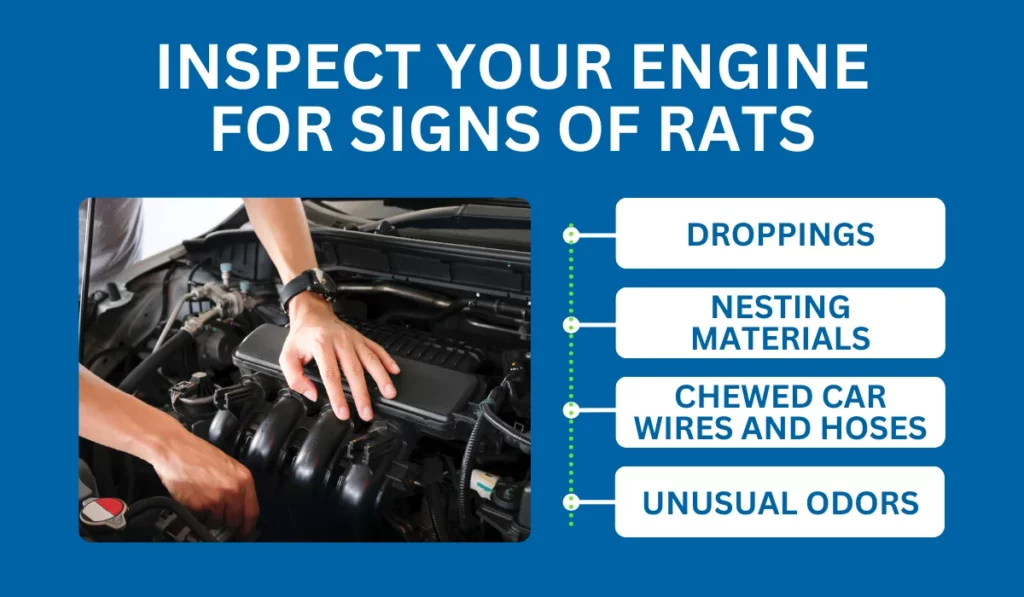
Before you can effectively remove rats, start by identifying whether they’ve invaded your car. Look for these telltale signs:
- Droppings: Small, dark pellets scattered around the engine bay.
- Nesting Materials: Shredded wrappers, leaves, or fabric tucked into corners or under covers.
- Chewed Car Wires and Hoses: Damage to electrical wiring, hoses, or other soft components.
- Unusual Odors: Foul smells from urine or droppings lingering in the engine compartment.
Clean Up the Area
Start by removing all nesting materials and rat droppings from the engine bay. This step is crucial to clear out any signs of rodent activity. Afterward, use a disinfectant to clean the areas where rats have been active. This helps eliminate the pheromones left behind, which could otherwise attract more rodents to the same spot.
Set Rat Traps
Setting traps is an effective way to catch rats quickly.
Baited with peanut butter, snap traps work well for larger rodents, while mouse traps are ideal for smaller infestations in tighter spaces.
To maximize their effectiveness, place these traps strategically around the engine bay and near any potential entry points.
Use Rodent Repellents
Rodent repellents can help protect your engine bay.
Peppermint oil is a popular option—soak cotton balls and place them around the area to keep rats at bay. Dryer sheets or Irish Spring soap can also work, thanks to their strong scents.
If you prefer a ready-made solution, you can find products on Amazon, like Fresh Cab or Pine-Sol, designed to deter rodents.
For a tech-savvy approach, ultrasonic devices emit high-frequency sounds that rats can’t stand but humans won’t notice.
Consider Natural Deterrents
Natural methods are another effective way to keep rats out. Ammonia or mothballs, with their strong odors, can repel rodents but should be used carefully due to toxicity.
To physically block access, cover vents and entry points with fine wire mesh.
Professional Pest Control
If DIY methods fail, call a pest control professional. They can assess the situation and provide tailored solutions.
How to Prevent Rat Infestations From Returning
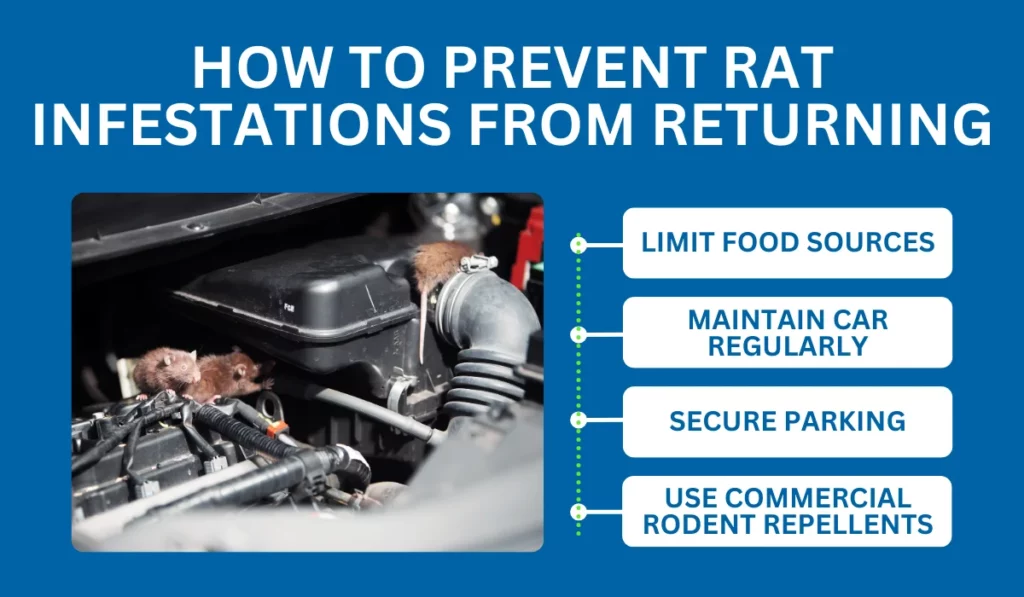
Soy-based wiring harnesses used in some vehicles, such as certain models by Toyota, Honda, and Ford, can attract rodents. To keep them from turning your car into their next nesting spot, focus on these preventive measures:
- Limit Food Sources: Never leave food wrappers or birdseed near your parking spot. Also, regularly clean your garage or parking area.
- Maintain Car Regularly: Open the car hood periodically to disturb any hidden rats. Check for signs of damage, such as chewed car wires or rat droppings.
- Secure Parking: Park in a garage or well-lit area to deter critters. Cover air filters and intake vents with wire mesh or rodent-proof covers.
- Use Commercial Rodent Repellents: Products like Fresh Cab or Tomcat rat repellents are designed to deter rats from entering your vehicle.
When to Call a Professional
If your car suffers significant rodent damage or if the infestation persists despite your efforts, it’s best to contact a pest control service.
At Simple Pest Management, we can handle severe cases and offer advice on preventing future issues.



